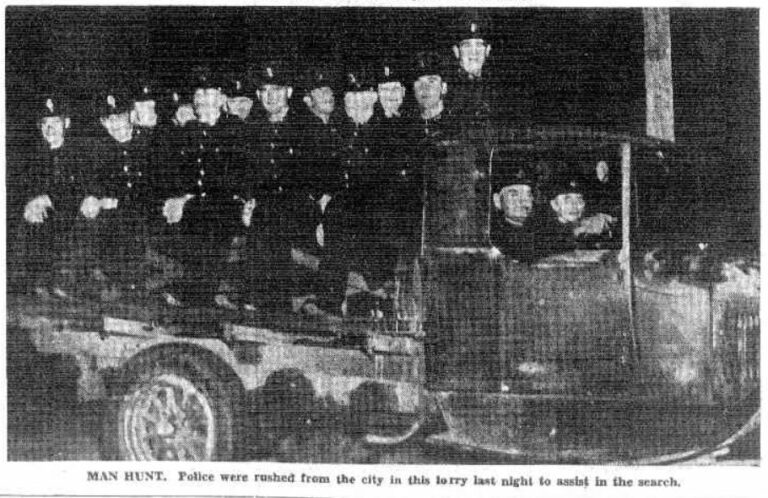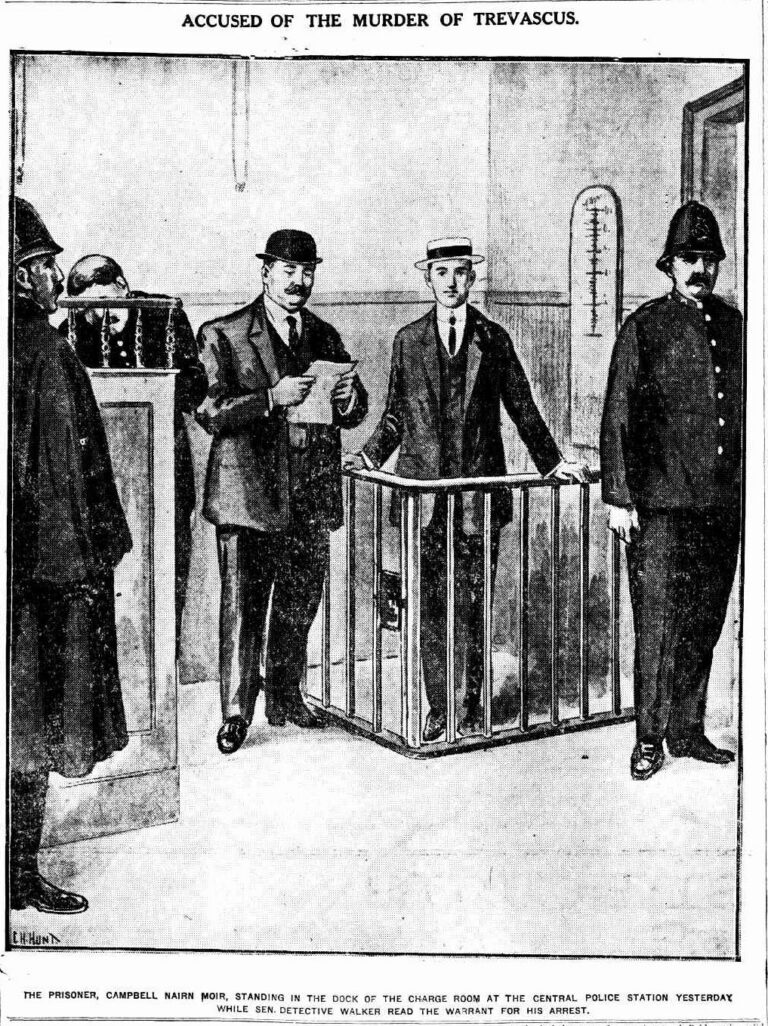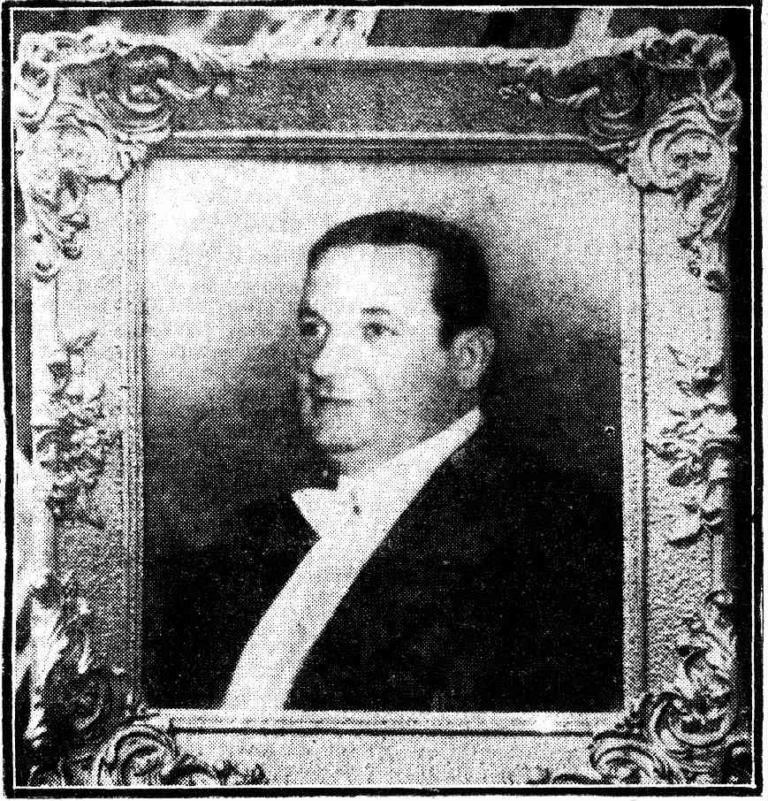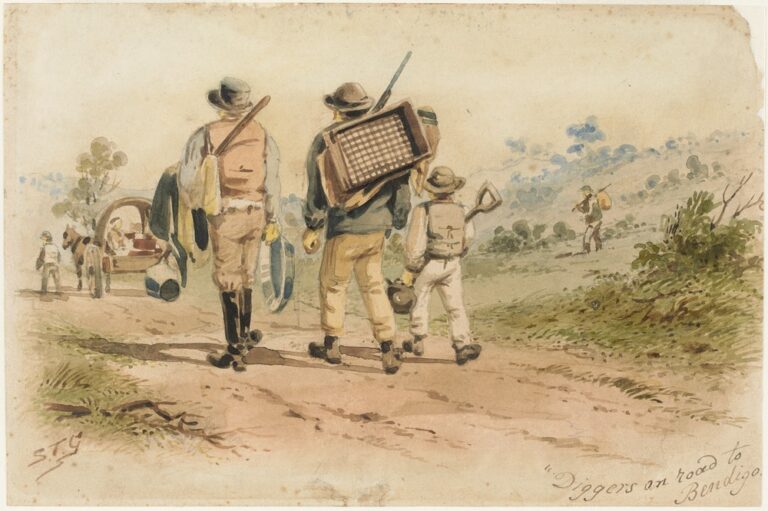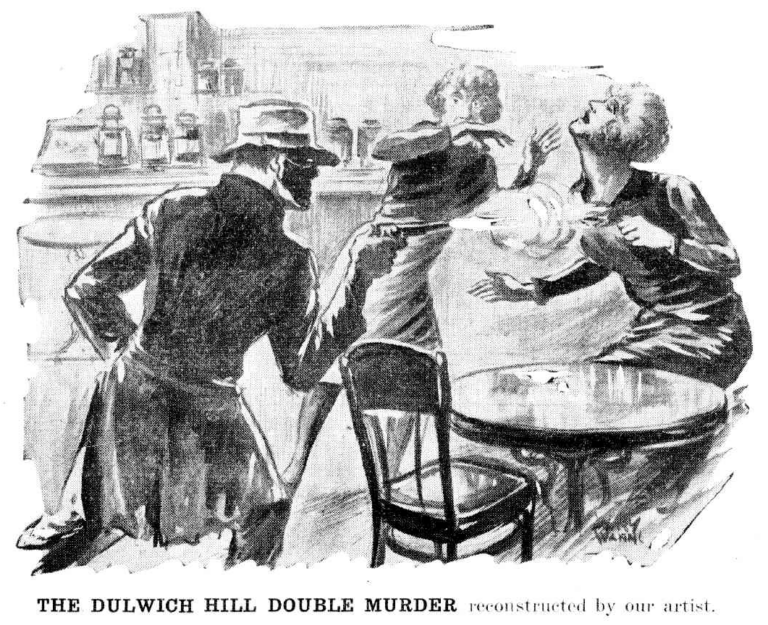By Elliot Lindsay
A garage in Glebe became the focus for an English woman’s disappearance, but why?

Sydney Police July 1923 mugshot of murder suspect Ellen Kreigher (Sydney Crime & Justice Museum)
A squad of detectives arrived at Westmoreland Lane, Glebe, on August 1st, 1923. The dark old laneway led to a dilapidated garage behind a terrace that still stands on the corner of Catherine and Westmoreland Streets today. They believed the garage harboured the answer to a grim mystery that had captivated the Australian public and puzzled law enforcement for the previous ten months.
The floor was made of heavy old flagstones from the century prior. The detectives observed that some showed signs of recently being re-positioned. Using crowbars, they lifted these stones and dug into the soil beneath. At a depth of a meter, the search was finally over. Lying in a mixture of lime and clay were white bones and clumps of blonde hair.
Disturbing letters
An anonymous letter was received by Sydney Police in mid-October 1922. It informed them of a woman who died in Coogee and was secretly placed in a small trunk transported to a shed on a narrow laneway and buried within. This enigmatic letter puzzled police, who spent months determining who had been killed and where she was buried. Perhaps it was just a prank?
The following June, NSW Police received correspondence from Scotland Yard. A man in England was concerned his daughter, Gertrude Mabel Heaydon, may have been killed by her Australian husband, whom she met in England during the war. His family received a letter from Gertrude dated September 21st, 1922. She confessed to being three months pregnant and was planning to have an abortion against the wishes of her husband’s family. This was the last letter they received from her for several months until another letter arrived in March the following year.
However, it was not from Gertrude. Instead, it was from her husband, Alfred. He wrote to inform them that Gertrude had passed away from a heart condition in January. The letter disturbed them as it seemed emotionless. Furthermore, Gertrude was only twenty-seven and in good shape; hence, they were not convinced.
With this tip from England, NSW Police opened an investigation into Gertrude’s whereabout as there were no formal records of her death. They interviewed her husband, Alfred Heaydon, as well as their neighbours. With every interview, they made more light shine on the mystery. Finally, it became apparent that Gertrude did not die of a heart condition. This was just an alibi for something much darker.

Gertrude Heaydon, the murder victim, whose severed arm was found in a Glebe garage
An Apartment in Coogee
The last time Gertrude was seen alive, she was in a Coogee apartment. The date was determined to be September 1922, one month before police received the anonymous letter which mentioned a dead woman in Coogee. Detectives were now confident that this was the very same woman.
Initially, Heaydon made a statement to detectives that his wife had left him, unaware they had his letters. However, realising they knew more than they let on, he changed his statement and came clean. The last time he saw his wife, she went to an illegal abortion clinic in Coogee. She never returned because she died during the procedure. When asked why he did not report it to the police, he explained that the abortionist and her husband were dangerous criminals and threatened him with violence. They then organised for Gertrude’s body to be secretly taken away and disposed of, but he claimed not to know where.
As the investigation preceded, police managed to identify a wagon driver employed to pick up some trunks from the same address in Coogee and transport them to a shed in Surry Hills. However, he arrived late and saw another wagon carrying the load. Unfortunately for the police, he didn’t have an exact address.
Suspects Arrested
Four suspects were arrested. Alfred Heaydon, Ellen Kreigher, Frank Taylor – whose wife had operated on Gertrude – and an associate of Taylor called Edward Riley.
Unfortunately, however, the key suspect, Mary Taylor, who performed the procedure, had died in February. Detectives did not interview her, leaving a large hole in the investigation.

Nonetheless, police moved forward with their charges. They stated that Mary Taylor had murdered Gertrude Mabel Heaydon in Coogee. She, Frank and Edward employed a team of hardened criminals to dispose of the body. Heaydon aided by commissioning the procedure. Though without Mary, the four suspects could only be charged for the crime of concealing a serious offence.
Meanwhile, no effort was spared to locate the mysterious shed, but all leads led nowhere regardless of action. Without the body, the case was doomed.
The garage
James Murphy was a career criminal and associate of Frank Taylor and Edward Riley. In October 1922, the three men were at a billiards saloon in Haymarket. Taylor told the men he required a place to hide stolen property. Riley said he had a garage and later took them all to a dark laneway behind 3 Catherine Street Glebe, where the garage was located. It was perfect, and Taylor had his cargo delivered there that week. The following week the same men were caught house-breaking and sentenced to five years in Darlinghurst prison.
Being an associate of Taylor’s, detectives interviewed Murphy to determine what he knew. While in prison, Murphy learned about Mary Taylor killing a girl and disposing of the body. Perhaps aiming to seek a reduced sentence, he decided to tell police everything he knew about the dead girl and the garage he visited on Westmoreland Lane in Glebe.

A century later: the terrace on the corner of Catherine and Westmoreland Streets, Glebe


Bones
When the first bone was discovered, police were confident they had the vital evidence to solidify their case. Yet that confidence faded after only eleven arm bones were revealed. It appeared they had been beaten to the scene. The rest of the body had been exhumed and relocated before they arrived. With only an arm, it was impossible to determine the identity of the remains.
The new evidence was still enough to start a Coroner’s Inquest, which lasted several weeks and was covered extensively in the press. The coroner finally concluded that the bones were Gertrude’s. She had been murdered by Mary Taylor, and Alfred Heaydon had aided and abetted her commissioning the crime. Accordingly, the coroner recommended Heaydon face a trial.
But the law has its limits. After reviewing the coroner’s decision, the NSW Attorney-General decided there was still not enough evidence to prove the bones were Gertrude’s remains. As a result, the charges against all the suspects were dropped. Thirty-nine years later, Gertrude’s body has never recovered, and the case remains cold.
However, what if Gertrude’s remains had been found in the decades since? Would authorities even know to look for a case in the 1920s? There are two hundred and fifty unidentified skeletons stored in the Glebe morgue today. It is perhaps possible that one may be the missing remains of Gertrude Mabel Heaydon.
This article is from Neighbourhood Media 2037 Magazine (https://www.neighbourhoodmedia.com.au/post/the-glebe-bones-mystery)


